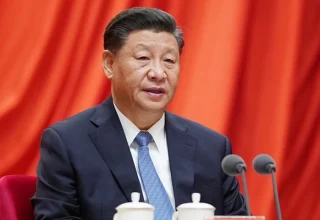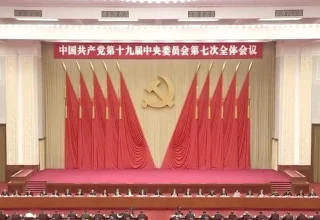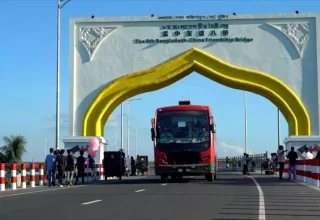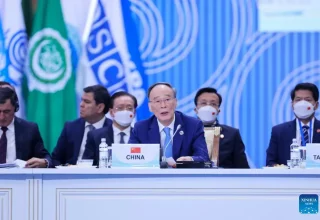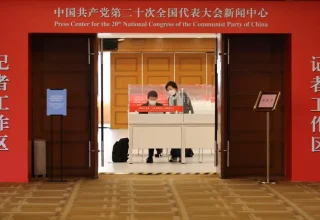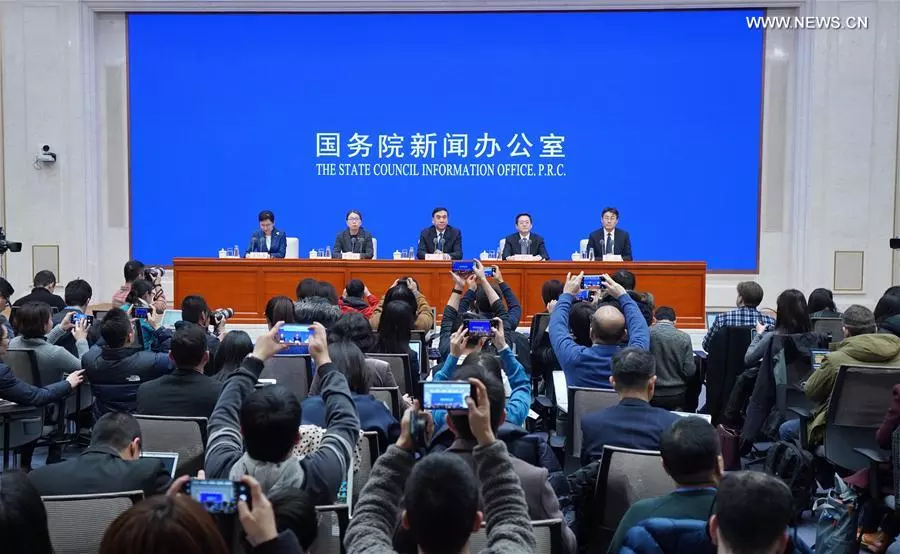
BEIJING, Sep 23(ABC): In the eyes of multiple foreign envoys, China’s sci-tech breakthroughs and green shift regarding infrastructure construction are creating opportunities for closer cooperation.
While touring the China State Construction Engineering Corporation (CSCEC) on Wednesday, representatives from over 70 foreign embassies and international organizations learned about the evolution of China’s construction industry as well as cutting-edge technologies in this regard.
“I was very impressed by not just the amount of work the company has done for 40 years, but the quality and expense, and the new technology which has been used here,” said Mary Muthoni Gichohi, Kenya’s ambassador to China, at an exhibition showcasing miniatures of CSCEC-built landmarks such as Beijing Winter Olympic venues and the CITIC Tower, as well as the construction technologies applied to these buildings.
“I do believe I can speak on behalf of my country that we have a lot to learn from China. And I’m very grateful that we got exposed to this technology today,” Gichohi told Xinhua.
For Uganda’s ambassador to China Oliver Wonekha, infrastructure construction is transforming her country, and she hoped to bring China’s construction technology to her country.
“Whatever I’ve seen (during the tour) is just amazing. The technology is very, very advanced,” Wonekha said. Citing cases such as Uganda’s Entebbe International Airport and the Kampala-Entebbe expressway that were built by Chinese companies, she anticipated that China-developed infrastructure would benefit her country’s development.
The CSCEC exemplifies the technology drive of China’s construction industry. The company’s data shows that it has spent over 20 billion yuan (about 2.86 billion U.S. dollars) annually on research and development over the recent five years.
During the tour, diplomats also shared their insights into topics including the low-carbon and digital transformation of the construction industry and the development of smart cities. The CSCEC’s strategies for green development were among what they focused on.
China has announced that it will strive for peaking carbon dioxide emissions by 2030 and achieving carbon neutrality by 2060. The CSCEC, internalizing a “green development philosophy,” has created an action plan to help advance this national undertaking.
The company said that it has formulated 10-plus national and industrial standards for green construction, with technologies featuring ultra-low energy consumption and zero-carbon emission being put in use.
While lauding China’s “ambitious goals” for reducing carbon emissions, Moin ul Haque, Pakistan’s ambassador to China, said that the company has brought new technologies and innovation to the industry, especially those focused on green development and those utilized for building smart cities.
“We are working very closely with China. China is already an important development partner of Pakistan,” Haque said, adding that Chinese companies have launched multiple energy projects and public buildings in Pakistan. He also expressed expectations for deeper bilateral cooperation in the housing sector.
Pioneering China’s overseas assistance, the CSCEC said that it has taken an active part in the urban planning of nations along the Belt and Road. Since 2013, the company has constructed over 300,000 units of affordable housing in countries including Singapore, Kenya, and the Maldives.
“We are very grateful to China,” said Gichohi. She stressed that infrastructure such as railways built by Chinese construction companies has improved the quality of life of Kenyan people.
“I look forward to engaging with them further to see what we can do to deliver good projects in my country,” Gichohi said.











